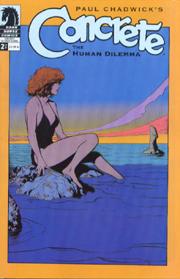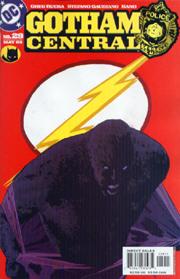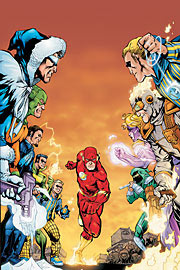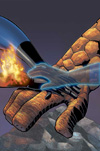The Prince of Tennis, vol. 2by Takeshi Konomi
Viz $7.95
Hikaru-no Go, vol. 2by yumi Hotta & Takeshi Obata
Viz $7.95

There's a certain dynamic to a martial arts comic: mad skils, ritualized combat, secret moves, rivalries, etc. Of course, reading only about martial arts in comics would be boring in the long run (something akin, say, to only reading super-hero comics).
In boys' manga, it seems that everything is a martial art, even tennis and Go!
Having already introduced the main characters and situations in their respoective first volumes, these second volumes of two popular Shonen Jump titles continue on their paths.
Both of these titles make use of what is a very standard plot: a youngster, talented beyind his years in a certain competitive endeavor, must constantly prove his worth to those who are older and dismissive of his perceived abilities.
The bulk of the second volume of
The Prince of Tennis involves Ryoma's attempt to earn a place on his school's tennis team, even though he os only a first year student. He dispatches one opponent after the other, making use of advanced moves and skills that are supposedly beyond the ability of one so young. Konomi choreographs the tennis matches like martial arts battles.
 Hikaru-no-Go
Hikaru-no-Go is a bit more subtle and nuanced than
Tennis. The main character from the first volume, the titular Hikaru, is still 'haunted' by the spirit of Sai, the ancient Go master. In one sense this is a bit of a cheat, as the mad skills that Hikaru seems to possess aren't really his, but Sai's. But to both Hikaru and the story's credit, Hikaru now wants to be able to play Go on his own, and succeed on his own merits. The story thus appears to be moving towards the more intellectually honest pursuit of Hikaru learning from a Go master.
Hikaru-no Go provides another narrative twist: halfway through this volume the focus splits into two, with one thread of the story following Akira, Hikaru's competitive nemesis. Like Ryoma in
The Prince of Tennis, Akira is the son of a champion in his chosen pursuit. His story seems to be mirroring almost exactly that of Ryoma's, but in
Hikaru-no Go it serves as a counter to Hikaru's story, wherein Hikaru is trying to help start a Go club at his school from the ground up.
The art in both titles is strong; there are few if any of the annoying manga shortcuts in evidence, and it is apprent that care has been taken to represent both the charcaters and their environments. Obata has the more difficult task, in that he has to make the playing of a board game visually exciting, and he pulls it off well.
The Prince of Tennis is not a bad manga by any stretch, but it suffers slightly from telling an overly familiar story (albiet in a new mileau). While the story in
Hikaru-no Go is familiar as well, it mixes up those conventions and brings a potential for greater character growth.
Ratings: The Prince of Tennis, vol. 2
: 2.5 (of 5); Hikaru-no-Go, vol. 2
: 3.5 (of 5)








